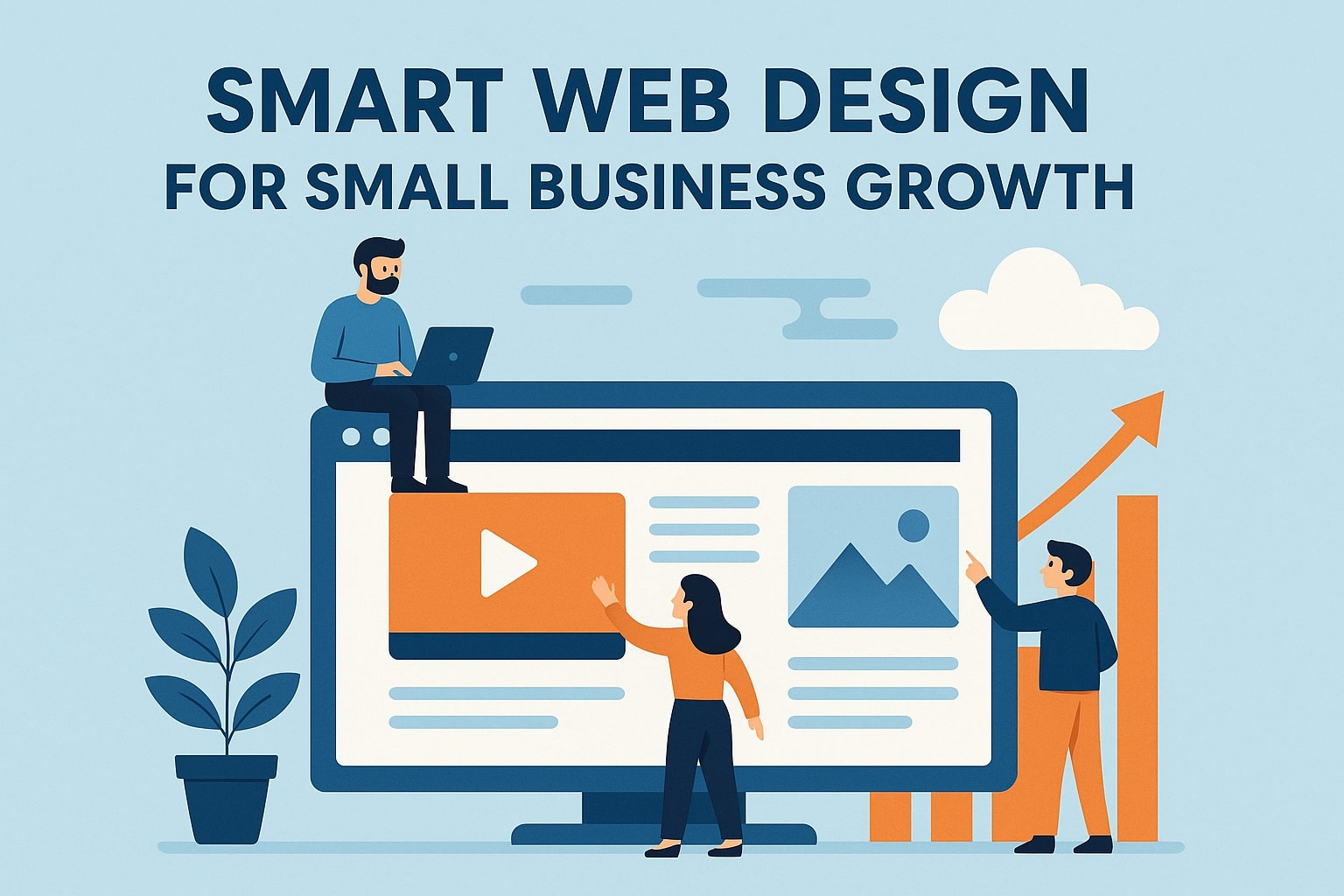In today’s fast-paced digital landscape, web design for small business owners has become one of the most critical factors determining success and growth. Your website acts as the digital front door to your brand — it’s where potential customers decide whether to trust your business or move on to a competitor. A smart, well-thought-out design can significantly enhance your brand’s credibility, boost sales, and improve customer engagement. Whether you’re just starting out or looking to upgrade your existing website, investing in a professional and user-friendly design can be the game-changer your small business needs.
Why Smart Web Design Matters for Small Businesses
First impressions matter, and your website is often the first point of contact between your business and your target audience. A cluttered or outdated design can quickly turn visitors away, while a sleek, modern, and intuitive design can encourage them to stay longer and explore your products or services.
Smart web design isn’t just about making a website look good — it’s about creating a user experience that leads visitors toward conversion. This means easy navigation, quick load times, mobile responsiveness, and clear calls-to-action (CTAs). When these elements come together, they create a website that not only attracts visitors but also converts them into paying customers.
Essential Elements of Smart Web Design
-
Responsive Layout
With over 60% of internet users browsing on mobile devices, your website must look and function perfectly across all screen sizes. Responsive web design ensures your site automatically adjusts its layout to fit any device, offering a seamless experience whether someone’s on a smartphone, tablet, or desktop. -
Fast Loading Speed
A slow website can kill conversions. Studies show that even a one-second delay in page loading can reduce conversions by up to 7%. Smart design includes image optimization, efficient coding, and the use of reliable hosting to ensure your website runs smoothly. -
Clean Navigation
Visitors should be able to find what they need in just a few clicks. Simple, intuitive menus, clear labels, and strategic placement of key information improve the user experience and reduce bounce rates. -
Strong Branding and Visuals
Your website should reflect your business personality and values. Consistent color schemes, professional images, and a clean logo reinforce brand identity and make your business more memorable. -
SEO Optimization
Even the best-designed website won’t help if no one can find it. Smart web design incorporates SEO-friendly practices — from meta tags and keyword placement to mobile optimization and fast load times — helping your site rank higher on search engines.
The Role of User Experience (UX) in Business Growth
User Experience (UX) plays a crucial role in determining how visitors interact with your website. If users can easily find what they’re looking for, they’re more likely to stay longer and engage with your content. A well-designed UX focuses on understanding user behavior and designing your website to meet their needs.
For instance, simplifying forms, adding intuitive navigation, and highlighting key services can make a huge difference in how users perceive your brand. The smoother the experience, the higher the chances of converting visitors into loyal customers.
Content and Conversion: The Power Duo
Smart web design doesn’t stop at visuals — it extends to how content is presented. High-quality content, paired with the right design, can boost engagement and conversions dramatically.
-
Readable Text: Use fonts that are easy to read on all devices.
-
Strategic CTAs: Buttons like “Get a Quote” or “Contact Us” should stand out and guide users toward action.
-
Visual Hierarchy: Important information should be placed where users naturally look first, such as the top or center of the page.
When content and design work together, your website becomes a powerful sales and marketing tool rather than just an online brochure.
Leveraging Analytics for Continuous Improvement
A truly smart web design is never “done.” It evolves based on data and user feedback. Tools like Google Analytics help track how visitors interact with your site — which pages they visit most, how long they stay, and where they drop off.
Using these insights, small business owners can make data-driven improvements to enhance performance. For example, if visitors are leaving a product page too soon, perhaps the layout needs to be simplified or the CTA made more prominent.
Integrating Social Proof and Testimonials
One of the most effective yet often overlooked aspects of smart web design is social proof. Customer testimonials, reviews, and case studies help build trust and credibility. Adding them strategically across your site — especially near CTAs — reassures visitors that your products or services are worth their investment.
Displaying logos of your clients, industry certifications, or awards can further enhance trust and brand authority. This subtle psychological reinforcement can make a major difference in how potential customers perceive your business.
How Smart Design Supports SEO and Local Visibility
Small businesses often rely heavily on local customers, which makes local SEO a vital part of your online strategy. A well-designed website can help you rank higher in local searches by incorporating location-specific keywords, schema markup, and optimized Google My Business integration.
Additionally, smart design ensures your site structure is crawlable by search engines. This improves indexing, helping your site appear more frequently when potential customers search for products or services in your area.
Keeping Security and Maintenance in Mind
Security is another crucial part of a smart web design strategy. Small businesses are frequent targets of cyberattacks due to outdated software or weak security measures. Incorporating SSL certificates, regular backups, and timely software updates ensures your website remains secure and trustworthy.
A secure site not only protects your data but also builds customer confidence, especially if you handle online payments or collect personal information.
Conclusion: Designing for Long-Term Success
In the competitive world of digital marketing, smart web design is no longer optional — it’s essential for small business growth. A professional, responsive, and user-focused website can help you attract more visitors, convert leads, and build long-term customer relationships.
Whether you’re a local retailer, a service provider, or a trade professional, the key to success lies in creating a site that reflects your brand’s quality, values, and reliability. By focusing on usability, SEO, and continuous improvement, your business can stand out in even the most crowded markets.
For trade professionals and small business owners looking to expand their reach, investing in a smart, optimized website for tradies can open the door to new opportunities and lasting growth.


